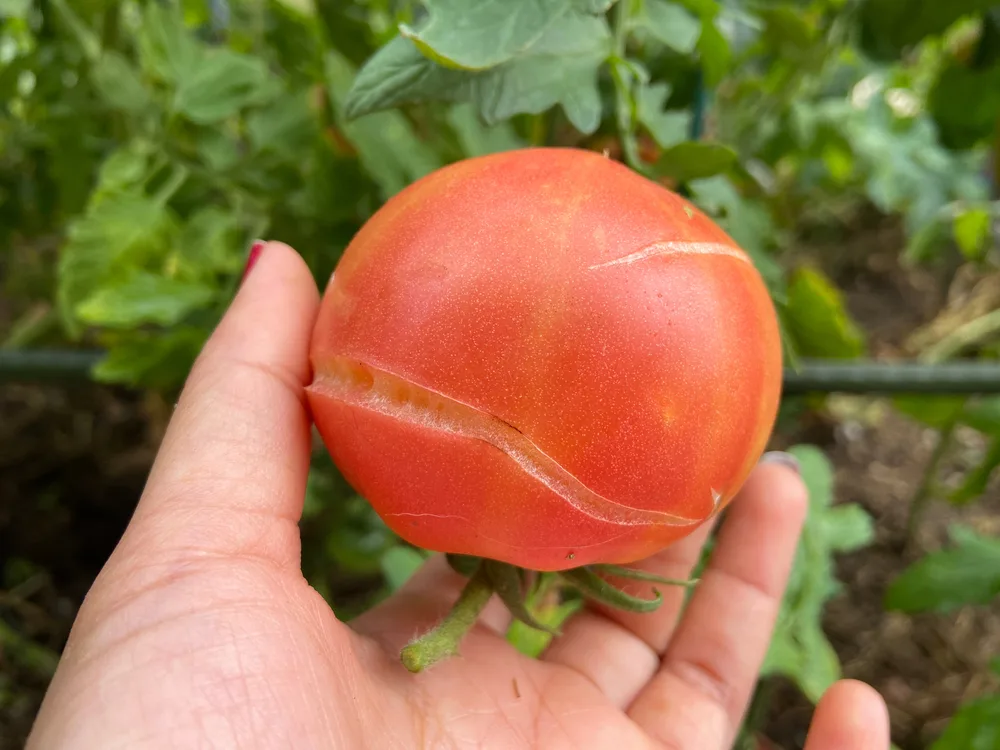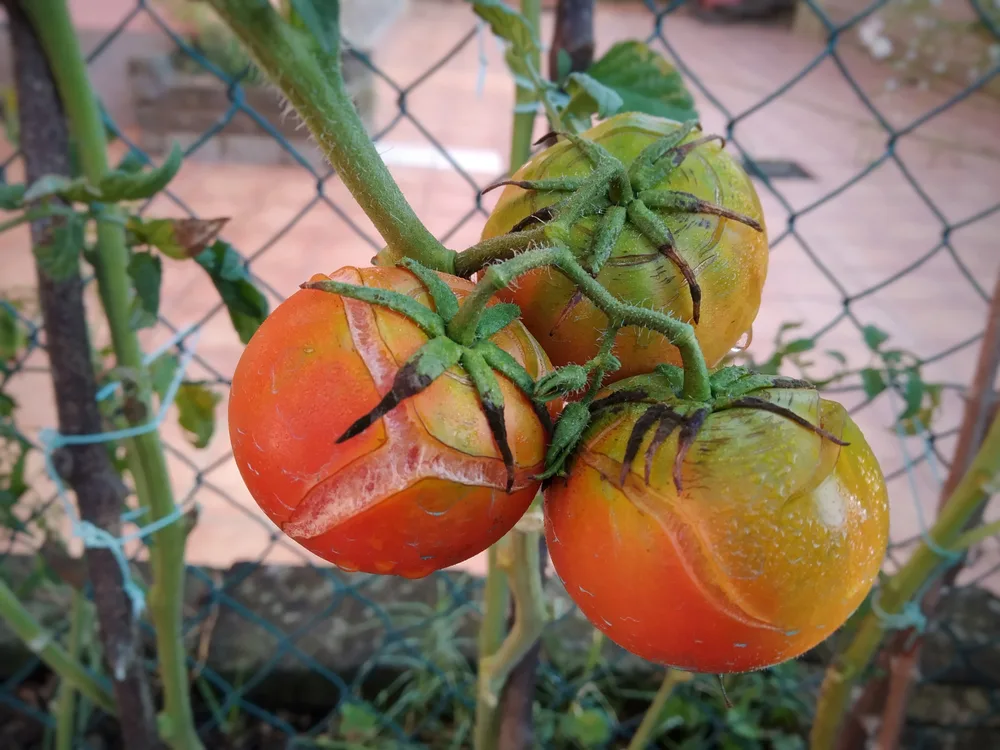
The tomatoes I see at the grocery store and farmer’s market always appear flawless—shiny and without any marks.
This isn’t always the case for home-grown tomatoes from a garden or planter, which can often be oddly shaped, varying in size and appearance, and sometimes even cracking.
After discussing this with a food scientist, I discovered that tomatoes naturally split open as they ripen on the vine.
Here’s what I’ve learned about why tomatoes split and whether they’re safe to consume.
Why Do Tomatoes Split?
Brian Chau, a food scientist and founder of Chau Time, explains that tomatoes develop cracks and depressions when the skin grows slower than the flesh.
Temperature fluctuations can affect tomato growth. Warm, sunny days followed by cooler nights can cause tomatoes to expand quickly and burst their skin.
Chau mentions that weather conditions also affect water absorption. Heavy or sudden rain can cause the tomato’s interior to swell and expand.

While we can’t control the weather, our gardening practices can influence the appearance of tomatoes.
Chau notes that irregular watering, alternating between too much and too little water, can cause tomatoes to grow unevenly and crack.
Are Cracked Tomatoes Safe to Eat?
Small cracks in the skin are generally harmless, and you can still eat the tomato. However, it’s best to harvest them promptly to prevent further damage.
Cracked tomatoes can be used in recipes without critical appearance, such as soups, jams, salsas, and juices.
However, tomatoes that have split open and exposed their flesh and seeds are unsafe to eat.
This exposes them to potential infection from pests like fruit worms, which can burrow into the fruit through the crack.
Chau warns that when the interior of the tomato is exposed, it can attract pests like fruit flies and lead to the growth of bacteria and mold.
If the tomato looks slimy, moldy, smells bad, or shows signs of insect infestation, it’s better to compost it than risk consuming it and getting sick.
